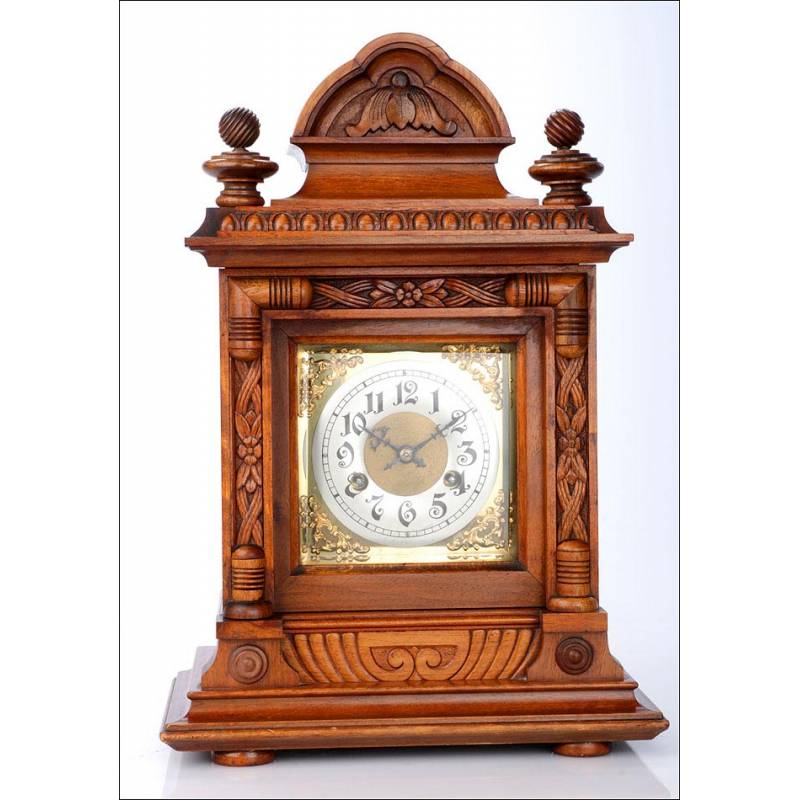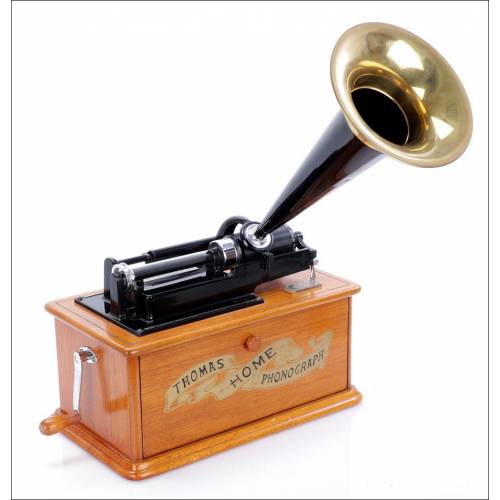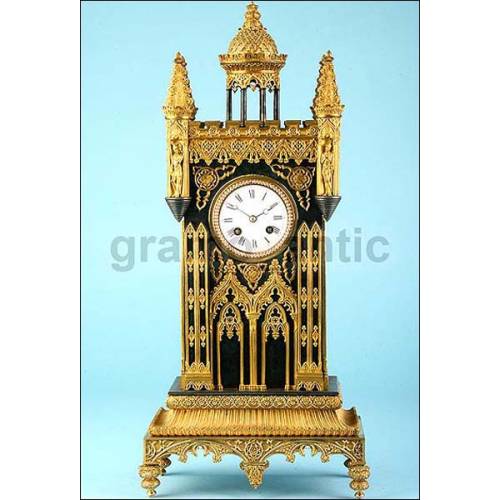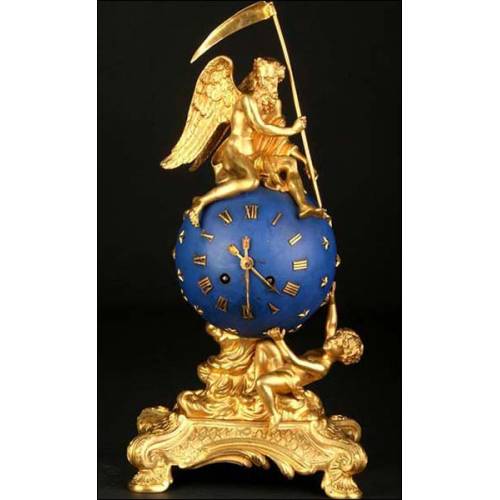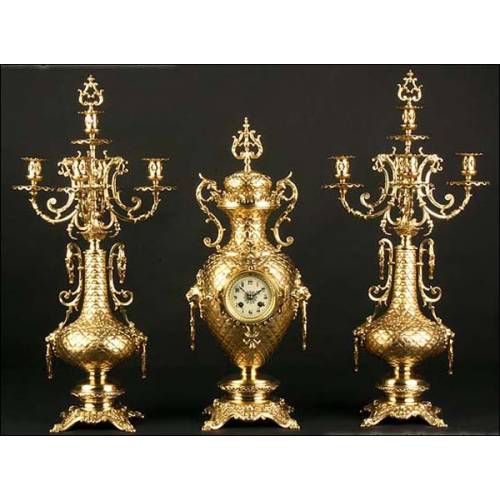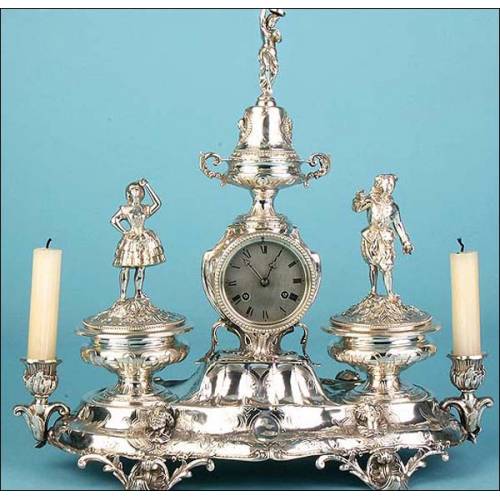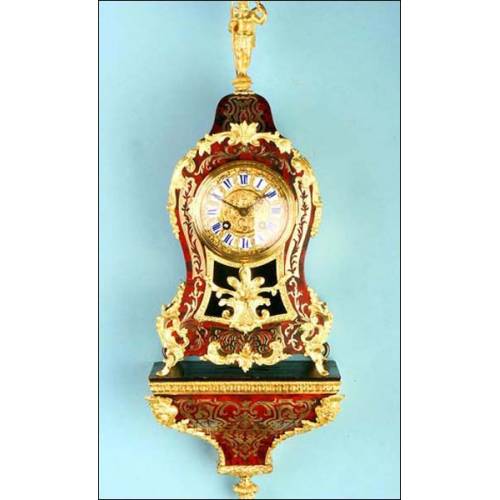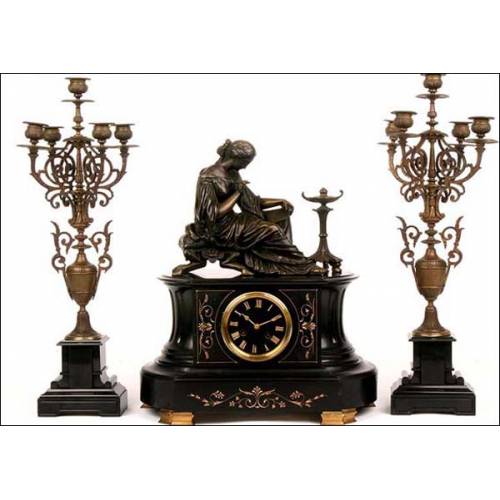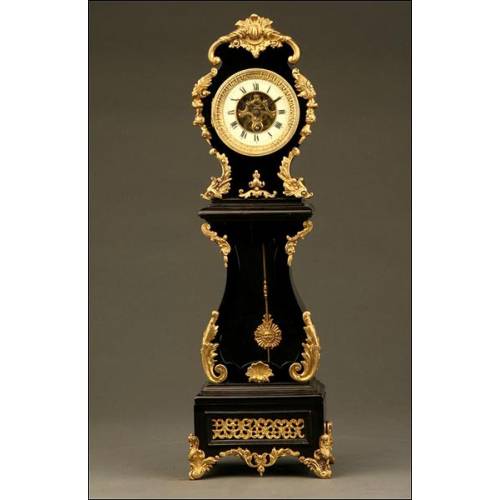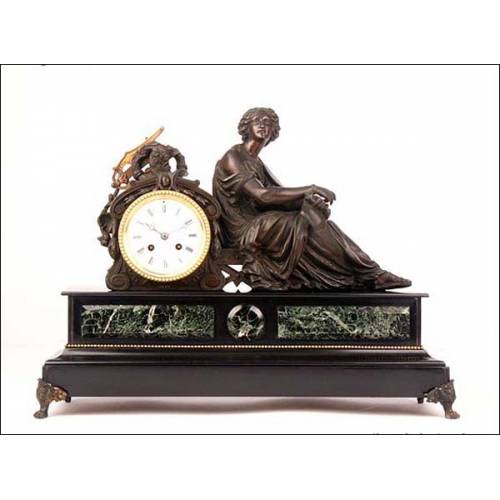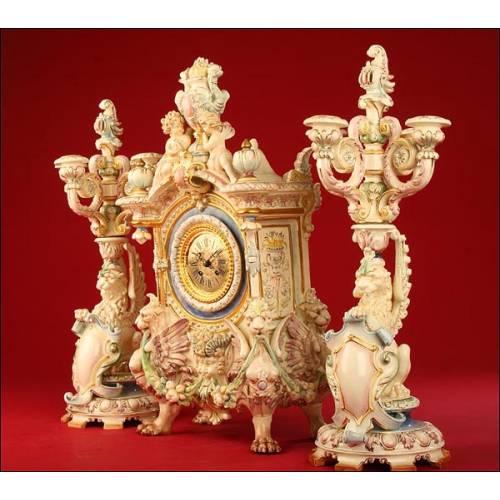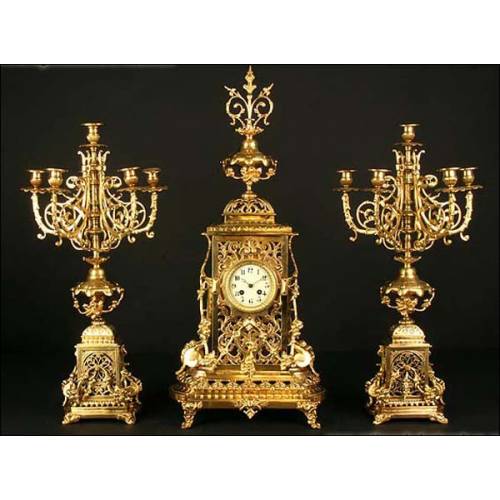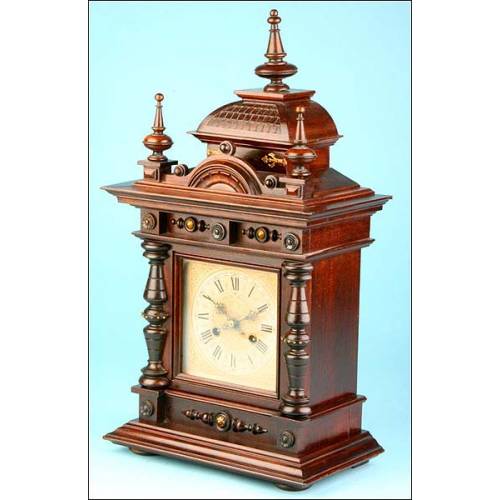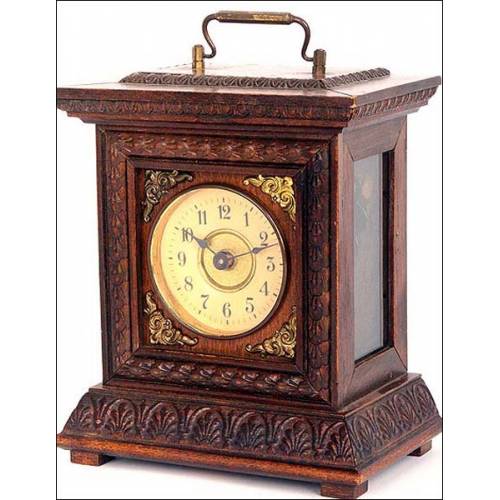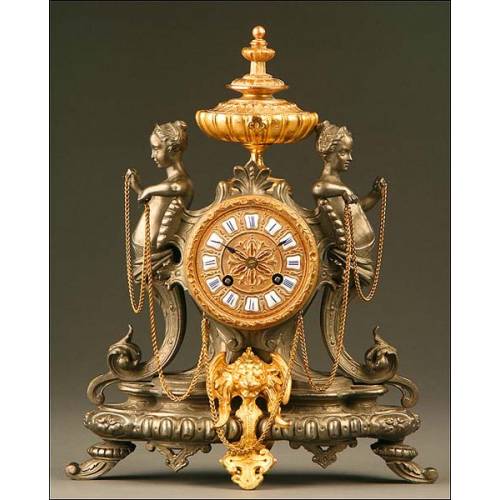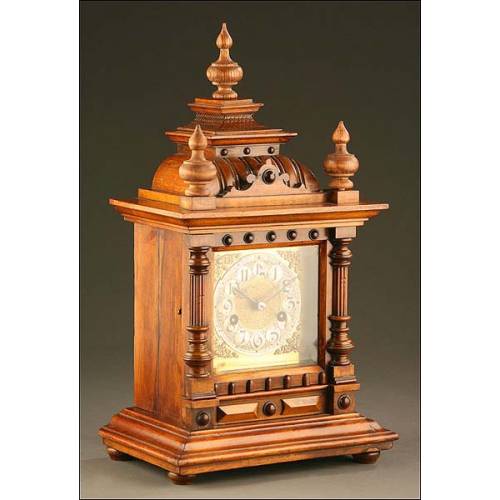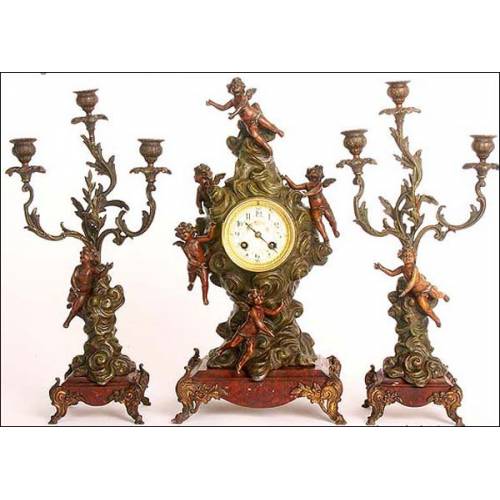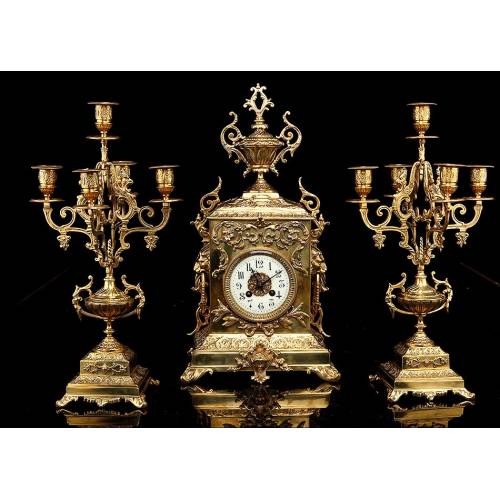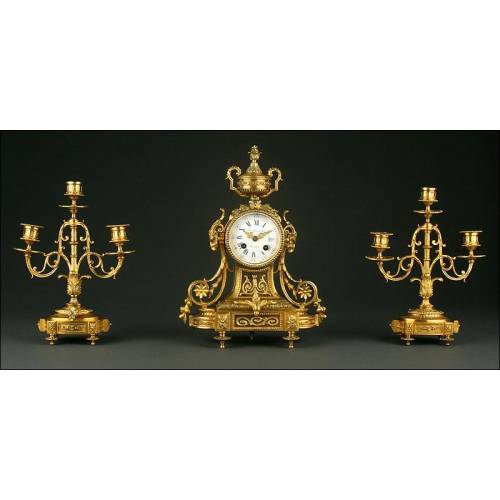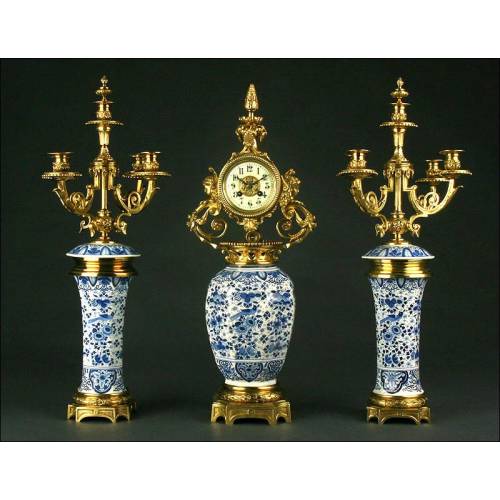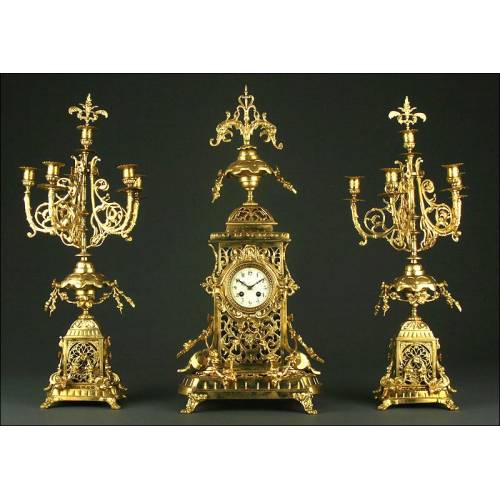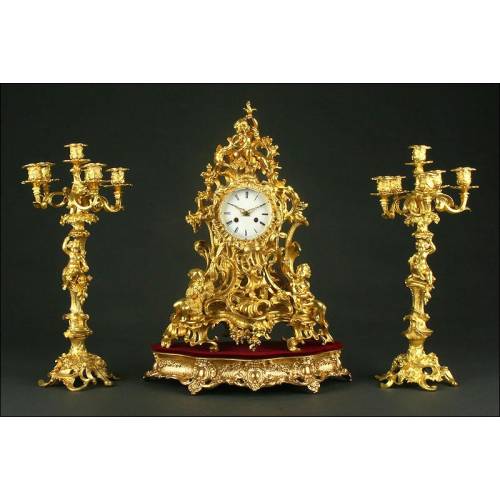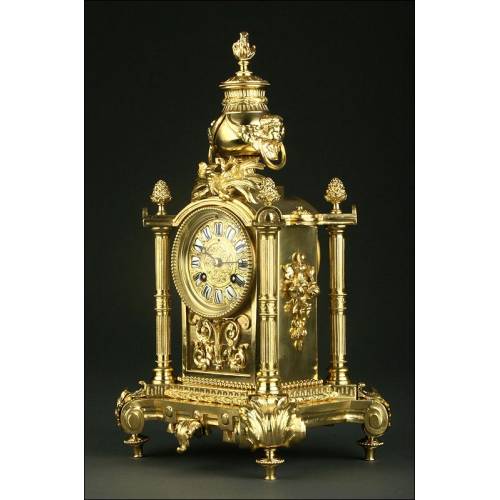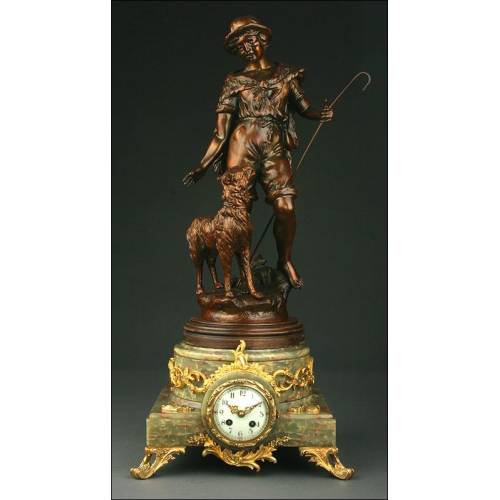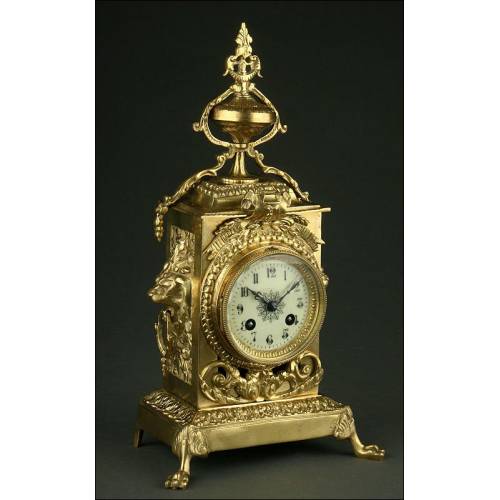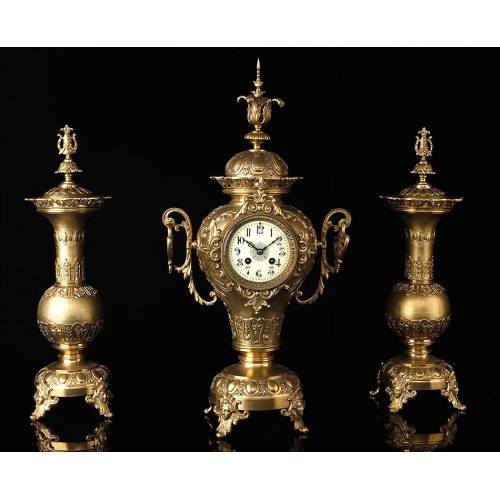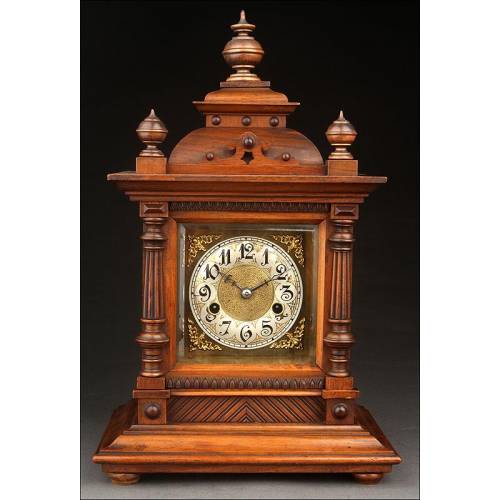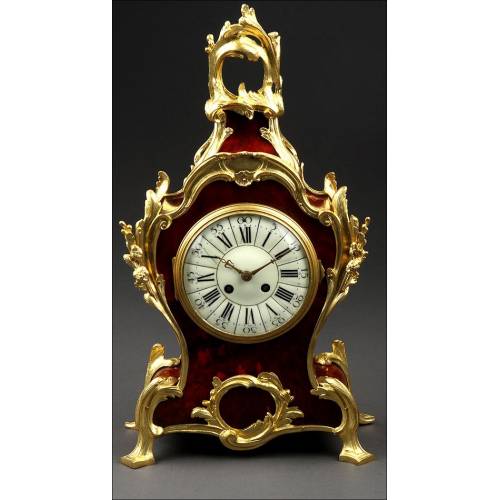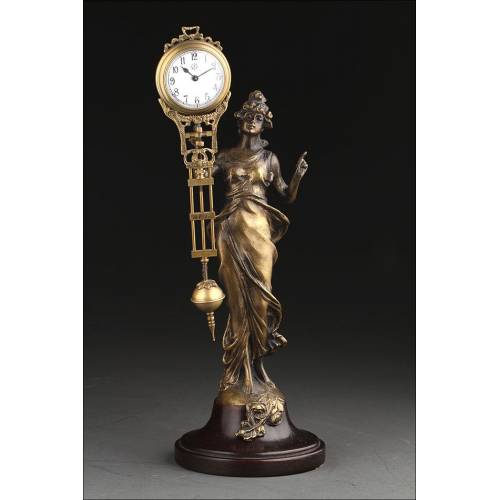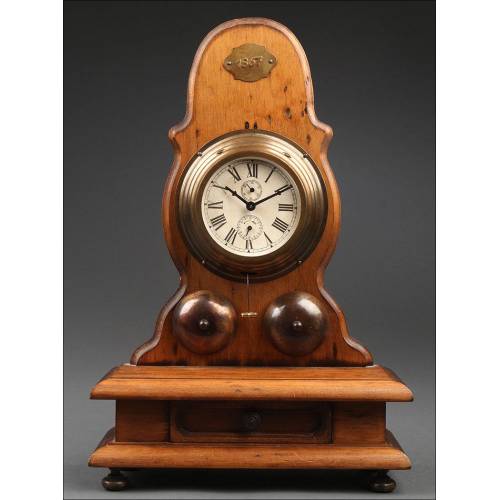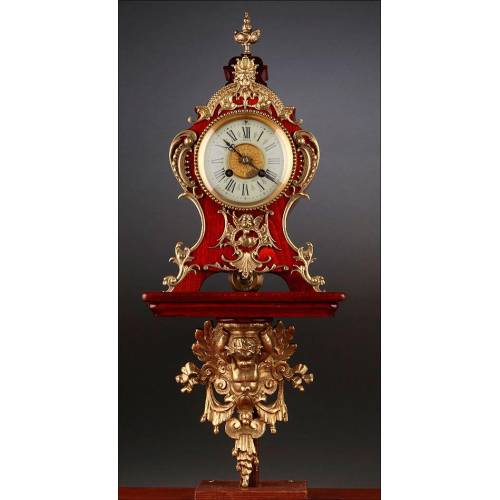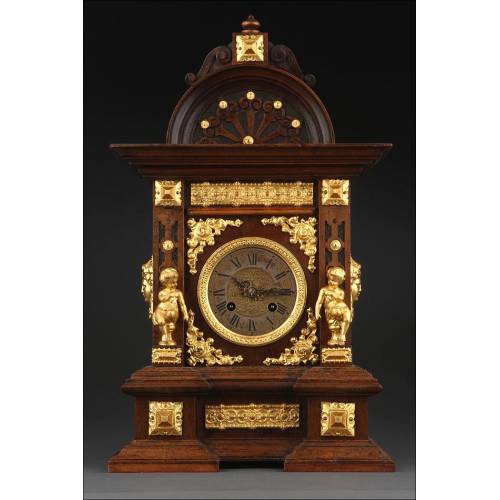C-469
Antique Junghans mantel clock. Germany, 1907
Superb turn of the century Junghans mantel clock. In mahogany. Movement and dial in superb condition. Hand carved case and chime.
Sold!
Awesome antique Junghans mantel clock made in Germany in 1907. Though being more than one hundred years old, the clock has survived to our days in an exceptional condition. The movement is very clean and works perfectly, chiming the hours and the halves on a gong. The mark A07 engraved in the movement indicates that the clock was made in the first half of 1907. The dial is also in amazingly good condition and so is the hand-carved wooden box. In general, this is a high-quality antique clock in striking working order, a good example of the great work made by the prestigious German clockmaker. The clocks box is made of solid mahogany wood. The wood remains in flawless condition, with no cracks, broken or worn parts. The front side is decorated with hand-carved vegetal-inspired details, symmetrically disposed. The French-polish finish that protects and enhances the wood has been carefully restored to regain its antique satin glow. These details mix neoclassic and art-deco style motifs, creating a very elegant piece. The dial is made of brass and enamel, with fassonzeiger black hands. It is in impeccable condition too. It has black gothic-style Arab numbers, big in size and really beautiful. The movement bears the engraved Junghans logo with the brand name into an 8-pointed star. All the lovers and collectors of antique clocks will appreciate the beauty, the fine sound and the high quality of this wonderful Junghans mantel clock. Measurements: Width:11.61 in / 29.45 cm. Height: 17.32 in / 44 cm. Depth: 7 in / 18 cm. History of Junghans On 15 April 1861 Erhard Junghans created the company "Junghans und Tobler" together with his brother-in-law Jakob Zeller-Tobler in Schramberg. The company began to produce wristwatches in 1927. Beginning in the 1950s, the Bauhaus designer Max Bill created clocks and watches for Junghans and the relationship lasted many years. A remarkable example of his work is a wall clock he designed in 1956/57 that is in the collection of The Museum of Modern Art (New York). In 1962 Bill also created mechanical wristwatches for Junghans impressive timepieces, not only for their aesthetic design, but also their precision. In the late 1980s, Junghans introduced the first radio-controlled table clock on the world market. In 1990 the first radio-controlled wristwatch, called the MEGA 1, followed. In 1995 Junghans presented a solar powered watch with ceramic housing. Together with the Japanese clock maker Seiko, Junghans developed a globally oriented wristwatch that automatically sets the local time in respective time zones.

